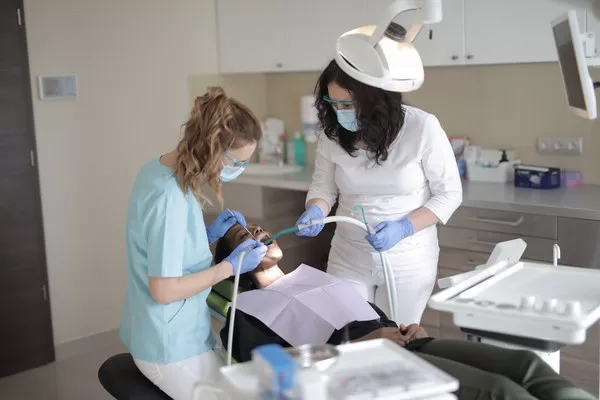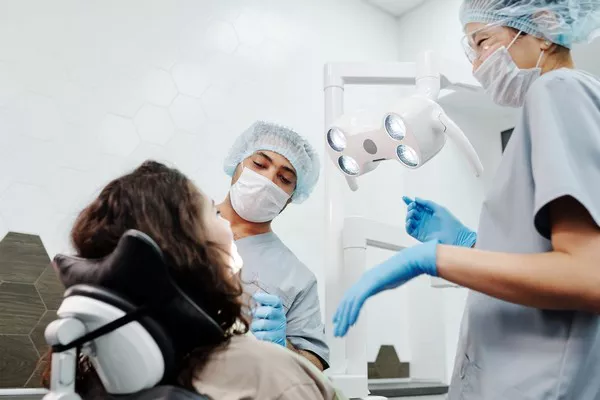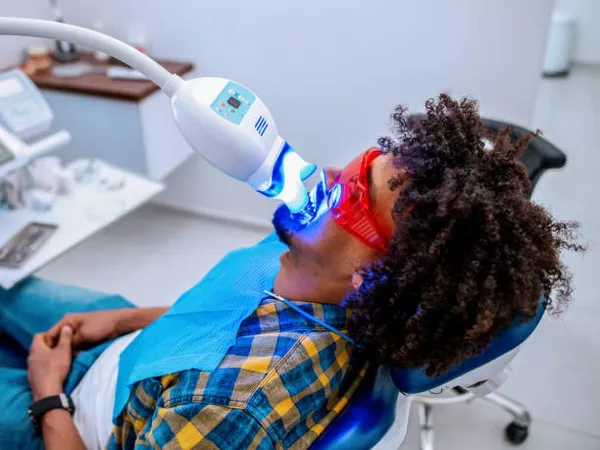Wisdom teeth removal is a common dental procedure that can alleviate pain, prevent overcrowding, and reduce the risk of future oral health issues. Understanding the healing timeline and proper post-operative care is crucial for a smooth recovery. This article provides a detailed overview of when wisdom teeth removal is fully healed, breaking down the healing process into stages, discussing factors influencing healing, providing care instructions, and highlighting signs of proper healing and potential complications.
Stages of Healing
Healing after wisdom teeth removal occurs in distinct stages, each playing a crucial role in the recovery process.
Initial Clot Formation (First 24-48 Hours)
Blood Clot Formation: Immediately after the extraction, a blood clot forms in the socket to stop bleeding and begin the healing process. This clot is essential for protecting the underlying bone and nerve endings.
Managing Bleeding: Biting on gauze helps control bleeding. It is crucial to avoid dislodging the clot to prevent dry socket, a painful condition where the clot fails to form or is prematurely dislodged.
Reduction in Swelling and Bruising (3-7 Days)
Swelling Peaks and Decreases: Swelling typically peaks within the first 48 to 72 hours post-surgery and begins to subside afterward. Applying ice packs during the initial 24 hours can help manage swelling.
Bruising: Bruising around the extraction site may occur and usually resolves within a week.
Tissue Healing and Stitch Removal (1-2 Weeks)
Stitch Removal: If stitches were used, they are usually removed or dissolve on their own within one to two weeks.
Granulation Tissue Formation: New tissue starts forming over the extraction site, promoting further healing.
Bone and Full Tissue Healing (3-6 Months)
Bone Remodeling: The underlying bone begins to remodel and fill in the socket over several months.
Full Recovery: Full recovery, including bone healing and the stabilization of the gums, typically occurs within three to six months.
Factors Influencing Healing
Several factors can influence the healing time after wisdom teeth removal:
Age
Younger patients generally heal faster than older individuals due to better regenerative capabilities and overall health.
Complexity of Extraction
Simple extractions heal faster, often within a few days, while more complex cases involving impacted teeth may take closer to two weeks for initial recovery.
Overall Health
Patients with good overall health and no underlying medical conditions tend to heal more quickly. Conditions such as diabetes or smoking can delay the healing process.
Oral Hygiene
Proper oral hygiene practices can prevent infections and promote faster healing.
Post-Operative Care Adherence
Following post-operative care instructions diligently significantly impacts the healing timeline.
see also: How long does it take to extract 3 wisdom teeth?
Care Instructions
Proper post-operative care is vital for promoting healing and preventing complications. Here are detailed care instructions to follow:
Rest
Rest for the first 24-48 hours after surgery. Avoid strenuous activities to minimize bleeding and swelling.
Diet
Initial Days: Stick to soft foods and liquids such as soups, yogurt, applesauce, and smoothies. Avoid hot, spicy, and acidic foods that can irritate the surgical site.
Gradual Reintroduction: Gradually reintroduce solid foods as tolerated, starting with softer options and avoiding hard, crunchy, or chewy foods that can disturb the healing site.
Oral Hygiene
First 24 Hours: Avoid brushing, rinsing, or spitting to prevent dislodging the blood clot.
After 24 Hours: Gently rinse your mouth with a saltwater solution (1 teaspoon of salt in 8 ounces of warm water) starting 24 hours after surgery. Do this several times a day, especially after meals.
Brushing: Resume brushing your teeth gently, avoiding the extraction sites. Use a soft-bristled toothbrush and be careful not to disturb the blood clot.
Medication Management
Pain Relief: Take prescribed pain medications as directed. Over-the-counter pain relievers like ibuprofen or acetaminophen can also help manage pain and reduce inflammation.
Antibiotics: If antibiotics are prescribed, complete the full course to prevent infection.
Signs of Proper Healing
Knowing what normal healing looks like can help you identify whether your recovery is on track:
1. Expected Discomfort: It is normal to experience some pain, swelling, and bruising after the surgery. These symptoms should gradually improve over the first few days.
2. Gradual Reduction in Swelling: Swelling should peak within 48-72 hours and then begin to subside. By the end of the first week, most swelling should have resolved.
3. Formation of Granulation Tissue: A whitish film may appear over the extraction site, which is part of the normal healing process and indicates the formation of new tissue.
4. Decreased Bleeding: Bleeding should stop within a few hours after the surgery. If minor bleeding persists, it should be easily controlled with gauze.
Warning Signs
While complications are rare, it’s important to recognize the signs that may indicate a problem:
1. Persistent Pain: Severe or worsening pain after the first few days, especially if it is not relieved by pain medications, may indicate a complication like dry socket.
2. Excessive Bleeding: If bleeding continues unabated despite applying pressure with gauze, it’s important to contact your dentist.
3. Signs of Infection: Symptoms such as fever, chills, pus discharge, severe swelling, or a foul taste in the mouth can indicate an infection.
4. Numbness or Tingling: Persistent numbness or tingling in the lips, tongue, or chin could suggest nerve involvement and requires prompt attention.
Activity Resumption
Knowing when it’s safe to resume normal activities is crucial for a smooth recovery:
1. Rest and Recovery: Plan to rest for the first 48 hours post-surgery. Avoid strenuous activities that can increase blood pressure and cause bleeding at the surgical sites.
2. Gradual Return: Gradually resume normal activities after the first few days, but avoid heavy lifting and vigorous exercise for at least a week.
3. Work or School: Most people can return to work or school within a few days to a week, depending on their comfort level and the nature of their job or studies.
Long-Term Care
Proper long-term care is essential to maintain oral health and ensure the success of the wisdom teeth removal:
1. Oral Hygiene: Continue to maintain excellent oral hygiene by brushing and flossing regularly, and using mouthwash as needed.
2. Regular Dental Visits: Schedule regular check-ups with your dentist to monitor your oral health and catch any potential issues early.
3. Diet and Lifestyle: Avoid smoking and limit alcohol consumption, as these can impair healing and increase the risk of complications.
Recovery Timeline
Understanding the recovery timeline can help set realistic expectations:
1. First 24-48 Hours: The most critical period for clot formation and initial healing. Follow strict post-operative care instructions to minimize complications.
2. First Week: Swelling and bruising should peak and then begin to subside. Most stitches, if non-dissolvable, are removed around this time.
3. Two Weeks: Significant healing of the gums and reduction in discomfort. Most patients can resume normal activities.
4. One Month: The majority of soft tissue healing is complete. Any residual soreness should be minimal.
5. Three to Six Months: Complete bone healing and remodeling. The extraction sites should be fully healed, with the bone filling in the sockets.
Conclusion
Wisdom teeth removal is a common procedure with a generally smooth recovery process if proper care is taken. Healing times vary based on factors such as age, overall health, and the complexity of the extraction. By following the stages of healing, adhering to post-operative care instructions, and being vigilant for any signs of complications, you can ensure a successful recovery. Regular follow-up with your dentist and maintaining good oral hygiene will contribute to long-term oral health and the success of your wisdom teeth removal.
FAQs About Wisdom Teeth Recovery
1. How do I know when my wisdom teeth are healed?
You can determine that your wisdom teeth are healed by observing several signs:
Absence of Pain: Pain and discomfort should significantly reduce or disappear.
Reduced Swelling: Swelling of the cheeks and jaw should subside.
Normal Eating: You can eat solid foods without discomfort.
No Bleeding: Bleeding should stop within a few days post-surgery.
Healthy Gum Tissue: The gum tissue around the extraction site should look normal and feel smooth.
Complete healing involves both the gum tissue and the underlying bone, so while you may feel better within a week or two, full bone healing can take several months.
2. When are you fully recovered from wisdom teeth removal?
Full recovery from wisdom teeth removal typically occurs within 1-2 weeks for most people. However, complete healing, including bone and tissue repair, can take up to 6 months. The initial recovery period, where you can resume normal activities and eating habits, generally takes about:
7-10 Days: For most of the soft tissue healing and reduction in pain and swelling.
3-4 Weeks: For the majority of recovery where you feel almost back to normal.
3-6 Months: For complete bone healing.
3. How long does it take for the holes to close after wisdom teeth removal?
The holes left after wisdom teeth removal, also known as extraction sockets, can take several weeks to several months to fully close and heal. Here’s a typical timeline:
1-2 Weeks: Soft tissue healing, with significant closure of the gum.
3-4 Weeks: Further closure and healing of the socket.
3-6 Months: Complete bone and tissue healing, with the holes fully closed.
During this period, maintaining good oral hygiene and following your dentist’s care instructions is essential to ensure proper healing.
4. When can I stop worrying about a dry socket?
A dry socket is a common complication that can occur when the blood clot at the site of the extraction is dislodged or dissolves before the wound has healed. You can generally stop worrying about a dry socket after the first week following the extraction. Here’s a more detailed timeline:
First 24-48 Hours: High risk for dry socket. Avoid strenuous activities, smoking, and using straws.
Day 3-5: The critical period where dry sockets are most likely to occur.
After 7 Days: The risk significantly decreases as the initial healing process progresses.
If you experience severe pain, bad breath, or an unpleasant taste in your mouth beyond the first few days, contact your dentist as these could be signs of a dry socket.
You Might Be Interested In






























